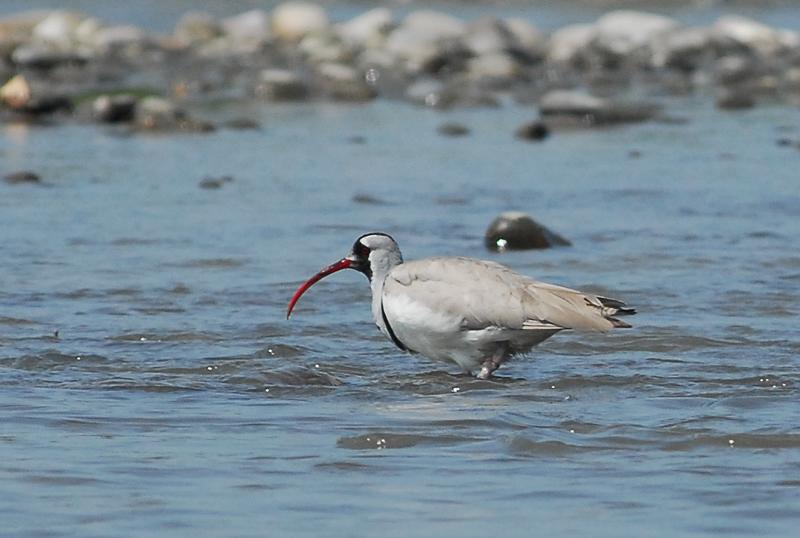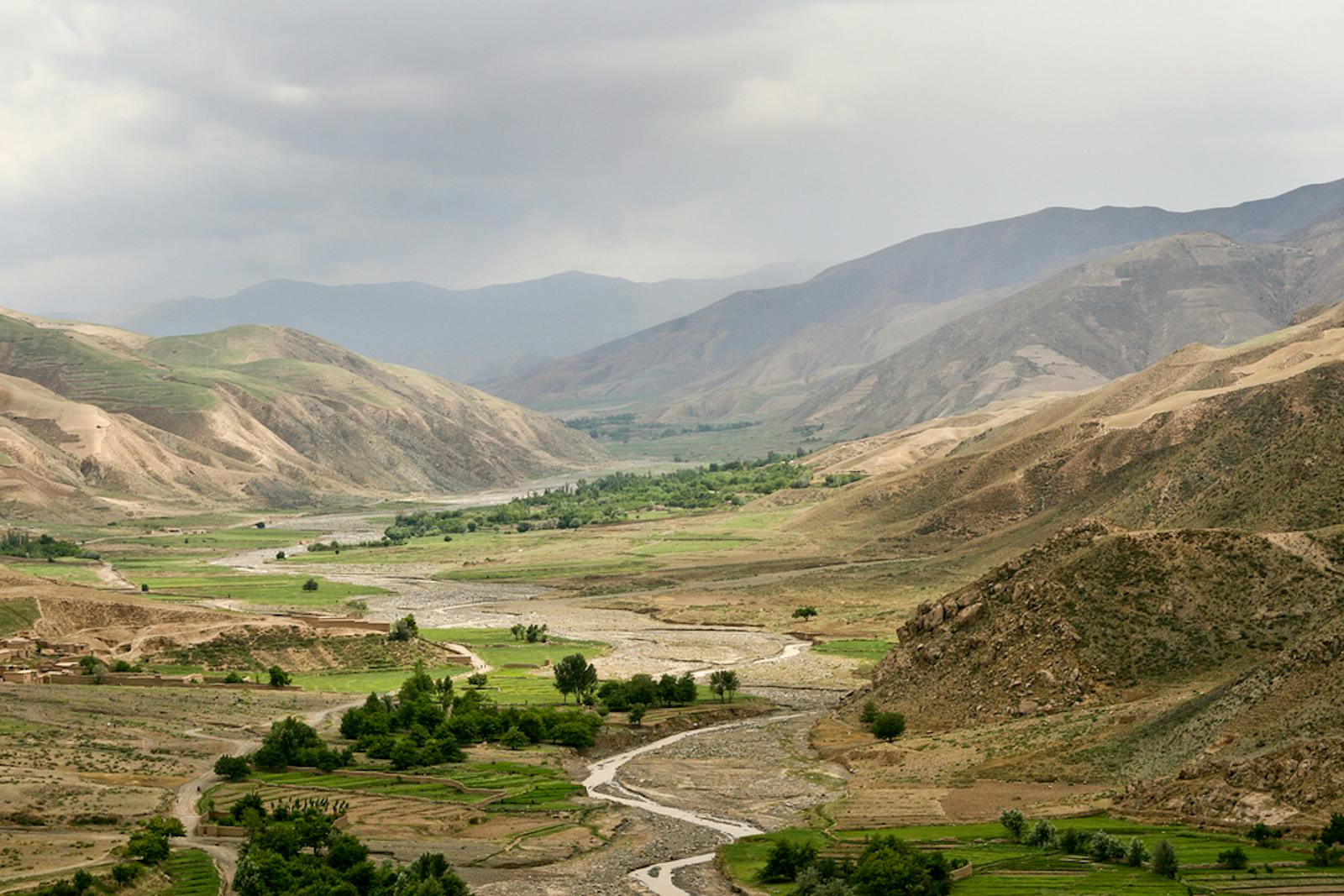Paropamisus Xeric Woodlands
The ecoregion’s land area is provided in units of 1,000 hectares. The conservation target is the Global Safety Net (GSN1) area for the given ecoregion. The protection level indicates the percentage of the GSN goal that is currently protected on a scale of 0-10. N/A means data is not available at this time.
Bioregion: Afghan-Balochistan Drylands, Mountain Meadows & Conifer Forests (PA30)
Realm: Central Eurasia
Ecoregion Size (1000 ha):
9,280
Ecoregion ID:
834
Conservation Target:
6%
Protection Level:
1
States: Afghanistan, Tajikistan
In the extreme north of Afghanistan, sparse woodlands of Pistachio and Bukhara almonds form a band along the mountains. These mountains are home to some 200 snow leopards which are extremely vulnerable due to hunting for fur and conflict with livestock owners. Much research has been done to help protect this animal, in particular in the Badakhshan province.
.jpg)
The flagship species of the Paropamisus Xeric Woodlands ecoregion is the marbled polecat. Image credit: Courtesy of Aleksandar, iNaturalist
This ecoregion is located mostly in Northern Afghanistan with an area of 92,803 km2, on the central mountains, where higher altitudes and more rainfall permit open xeric woodlands to thrive. It is predominately covered by grassland with fractions of sparse low canopy woodland. The Paropamisus Xeric Woodlands ecoregion is located in the extreme north of the region. Elevation ranges from a minimum of 371 m to a maximum of 5,592 m. The average precipitation is 440.1 mm per year. The average annual temperature is 9.9°C with an average minimum of -11.2°C and maximum of 40.4°C. Pistachio and Bukhara almond form a band along the northern mountains, at altitudes between 600–1,500 m. Above this altitude, juniper species prevail.
Among the wildlife found in this region is the critically endangered sociable lapwing, as well as the endangered white-headed duck, Egyptian vulture, Saker falcon, Pallas’s fish-eagle, Kashmir muskdeer, and the vulnerable snow leopard and marbled polecat. The snow leopard has been an subject of intense research in particular in the Wakhan Corridor in the northern province of Badakhshan. In Afghanistan, the population of snow leopards is close to 200 individuals and is legally protected by the national government. A small population of a rare sub-species of the Bactrian deer was recently confirmed in the North-eastern region of Darqad after years of turmoil. Darqad is also significant for its tugal vegetation. The last sightings of tigers in Afghanistan were in 1967; the area has suffered severe degradation in the past decades.

Ibisbills. Image credit: Vishal Sabharwal, Creative Commons
Among the protected areas in this ecoregion, the proposed Darqad Wildlife Reserve covers an area of 120 km2, bordering Tajikistan in the Northeast of this ecoregion. This reserve overlaps with the Darqad Important Bird Area, a lowland floodplain area of the river Amur Darya, one of the most important in Asia, scattered with tributaries and islands. Much of the original swamp woodlands formed by thickets Tamarix and Salix trees and Phragmites reeds was lost due deforestation and conversion to cultivations fields after the 1970s. This ecoregion also intersects the North-western Steppe and Salang Kotal Important Bird Areas.
The North-western Steppe is a barren, hot, and desert-like steppe plains, with a predominance of Artemisia steppe in the lowlands, Pistachio woodlands and patches of Juniper on the hills. One of the key species here is the vulnerable yellow-eyed pigeon. The vulnerable Persian onager, a sub-species of Asiatic wild ass, and the goitered gazelle have occurred here.
The Salang Kotal is a 10 km long valley, part of the Amu Darya river watershed, and is notable for having a remarkable diversity of Himalayan breeding birds, such as the white-winged woodpecker, the plain leaf warbler and the red-mantled rosefinch. Less than half of the ecoregion is regarded as a core area, and some 30% is cropland. This ecoregion is sparsely populated with an average of 0.4 inhabitant per hectare with a maximum of 54 inhabitants per hectare.
As in much of Afghanistan, deforestation, overgrazing, and shrub collection are the mains threats to the ecoregion, as well as unregulated or illegal hunting, and trapping for subsistence, trade, or commerce. Hunting became worse in Afghanistan after locals had access to heavier weapons due to the wars. Other threats include the lack of effectiveness in protected area implementation of Darqad Wildlife Reserve and a lack of institutional capacity to effectively manage these areas.
The priority conservation actions will be to: 1) strengthen environmental administration capacity; 2) support the establishment of Darqad Wildlife Reserve and the creation of new ones, primarily to protect the Xeric Woodlands; and 3) strengthen law enforcement on environmental protection, especially for combating illegal hunting.
Citations
- UNEP, NEPA, GEF. 2008. Biodiversity Profile of Afghanistan. An Output of the National Capacity Needs Self-Assessment for Global Environment Management (NCSA) for Afghanistan.
- Freitag, Helmut. "Studies in the natural vegetation of Afghanistan." Plant Life of South west Asia (1971).
- Network, S.L. 2014. Snow leopard survival strategy. Seattle, Washington, USA, pp


.png?auto=compress%2Cformat&w=300)

